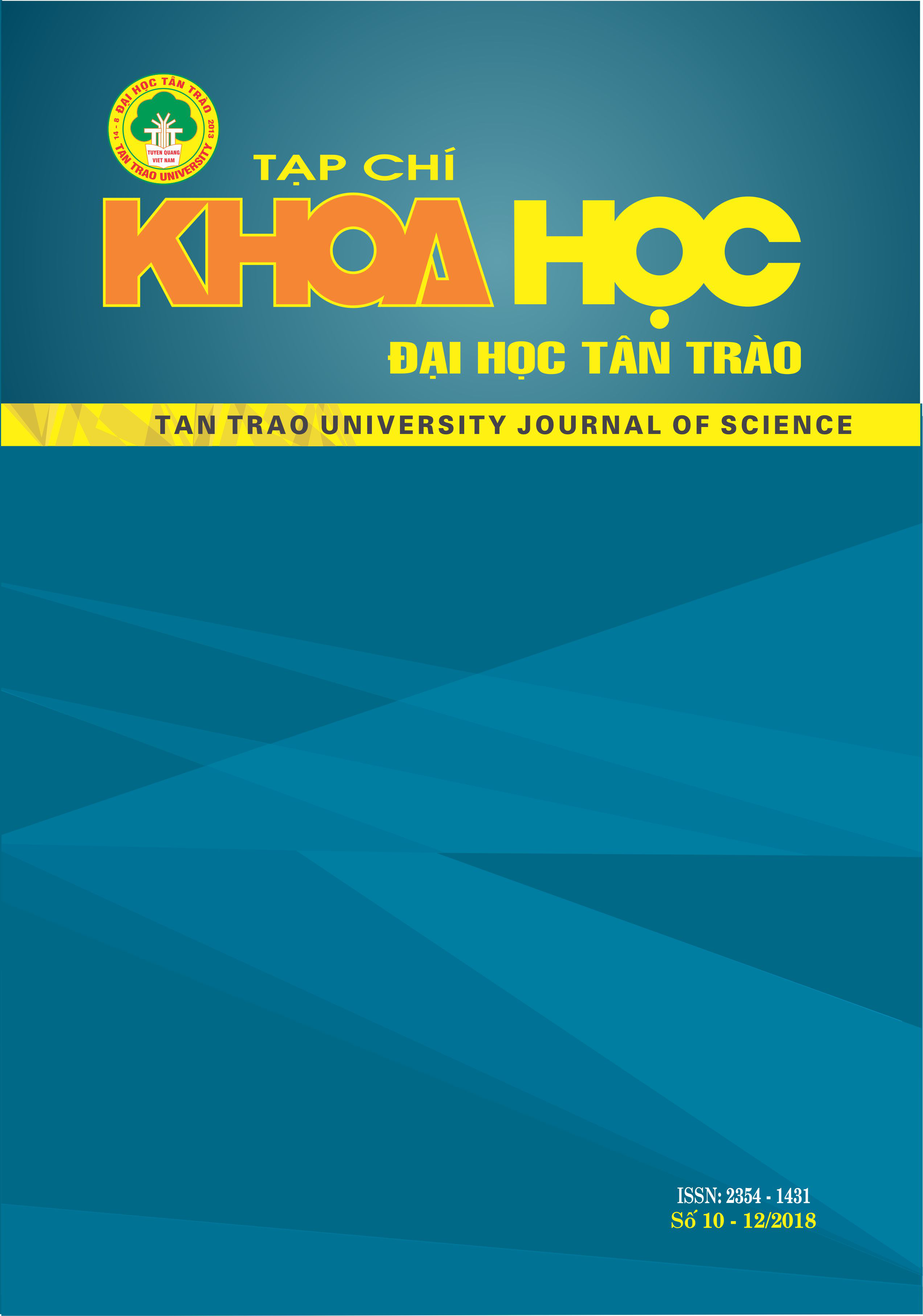Thermodynamic parameters depend on temperature with the influence of doping ratio of the crystal structure metals in extended X-Ray absorption fine structure
DOI:
https://doi.org/10.51453/2354-1431/2018/238Keywords:
Brackpoint; cumulants; doping ratio; parameter; thermodynamic.Abstract
The effects of the doping ratio and temperature on the cumulants and
thermodynamic parameters of crystal structure metals and their alloys was
investigated using the anharmonic correlated Einstein model, in extended X-ray absorption fine structure (EXAFS) spectra. We derived analytical expressions for the EXAFS cumulants, correlated Einstein frequency, Einstein temperature, and effective spring constant. We have considered parameters of the effective Morse
potential and the Debye-Waller factor depend on temperature and the effects of the doping ratio of face-centered-cubic (fcc) crystals of copper (Cu-Cu), silver (Ag-Ag), and hexagonal-close-packed (hcp) crystal of zinc (Zn-Zn), and their alloys of Cu-Ag and Cu-Zn. The derived anharmonic effective potential includes the contributions of all the nearest neighbors of the absorbing and scattering atoms. This accounts for three-dimensional interactions and the parameters of the
Morse potential, to describe single-pair atomic interactions. The numerical
results of the EXAFS cumulants, thermodynamic parameters, and anharmonic effective potential agree reasonably with experiments and other theories.
Downloads
References
1. A. I. Frenkel and J. J. Rehr, Phys. Rev. B 48, 585 (1993).
2. B. S. Clausen, L. Grabæk, H. Topsoe, L. B. Hansen, P. Stoltze, J. K. Norskǿv, and O. H. Nielsen, J. Catal. 141, 368 (1993).
3. Duc B. N., Hung N.V., Khoa H.D., Vuong D.Q, and Tien S.T., Advances in Materials Sciences and Engineering, Vol 2018, Article ID 3263170, 9 pages doi.org/10.1155/2018/3263170 (2018).
4. H.Ö. Pamuk and T. Halicioğlu, Phys. Stat. Sol. A 37, 695 (1976).
5. Hung N. V., Trung N. B., and Duc B. N, J. Materials Sciences and Applications 1(3) (2015) 91.
6. J. C. Kraut and W. B. Stern, J. Gold Bulletin 33(2) (2000) 52.
7. J. M. Tranquada and R. Ingalls, Phys. Rev. B 28, 3520 (1997).
8. N. V. Hung, N. B. Duc, and R. R. Frahm, J. Phys.Soc. Jpn. 72(5), 1254 (2002).
9. N. V. Hung, T. S. Tien, N. B. Duc, and D. Q. Vuong,
Modern Physics Letter B 28 (21), 1450174 (2014).
10. N. V. Hung and J. J. Rehr, Phys. Rev. B 56 (1997) 43.
11. N. V. Hung, C. S. Thang, N. B. Duc, D. Q. Vuong and T. S. Tien, Eur. Phys. J. B 90, 256 (2017).
12. N. V. Hung, N. B. Duc, Proceedings of the Third International Workshop on Material Science (IWOM’S99, 1999).
13. N. V. Hung and N. B. Duc, Commun. in Phys., 10, (2000) 15-21.
14. N. B. Duc, V. Q. Tho, N. V. Hung, D. Q. Khoa, and H. K. Hieu, Vacuum 145, 272 (2017).
15. N. B. Duc, H. K. Hieu, N. T. Binh, and K. C. Nguyen, X-Ray absorption fine structure: basic and applications, Sciences and Technics Publishing House, Hanoi, 2018.
16. A. Nafi, M. Cheikh, and O. Mercier, "Identification of mechanical properties of CuSil-steel brazed structures joints: a numerical approach," Journal of Adhesion Science and Technology 27 (24), 2705 (2013), doi:10.1080/01694243.2013.805640.
17. M. A. Laughton and D. F. Warne, Electrical Engineers Reference Book (Elsevier, ISBN: 978-0-7506-4637-6, 2003), pp.10.
Downloads
Published
How to Cite
Issue
Section
License

This work is licensed under a Creative Commons Attribution-ShareAlike 4.0 International License.
All articles published in SJTTU are licensed under a Creative Commons Attribution-ShareAlike 4.0 International (CC BY-SA) license. This means anyone is free to copy, transform, or redistribute articles for any lawful purpose in any medium, provided they give appropriate attribution to the original author(s) and SJTTU, link to the license, indicate if changes were made, and redistribute any derivative work under the same license.
Copyright on articles is retained by the respective author(s), without restrictions. A non-exclusive license is granted to SJTTU to publish the article and identify itself as its original publisher, along with the commercial right to include the article in a hardcopy issue for sale to libraries and individuals.
Although the conditions of the CC BY-SA license don't apply to authors (as the copyright holder of your article, you have no restrictions on your rights), by submitting to SJTTU, authors recognize the rights of readers, and must grant any third party the right to use their article to the extent provided by the license.


